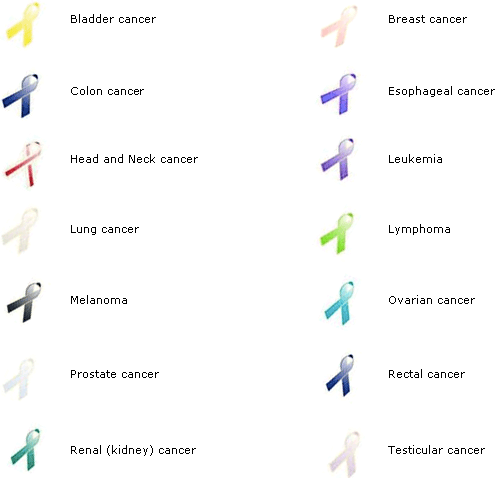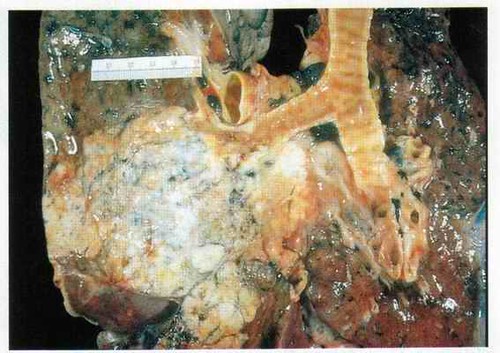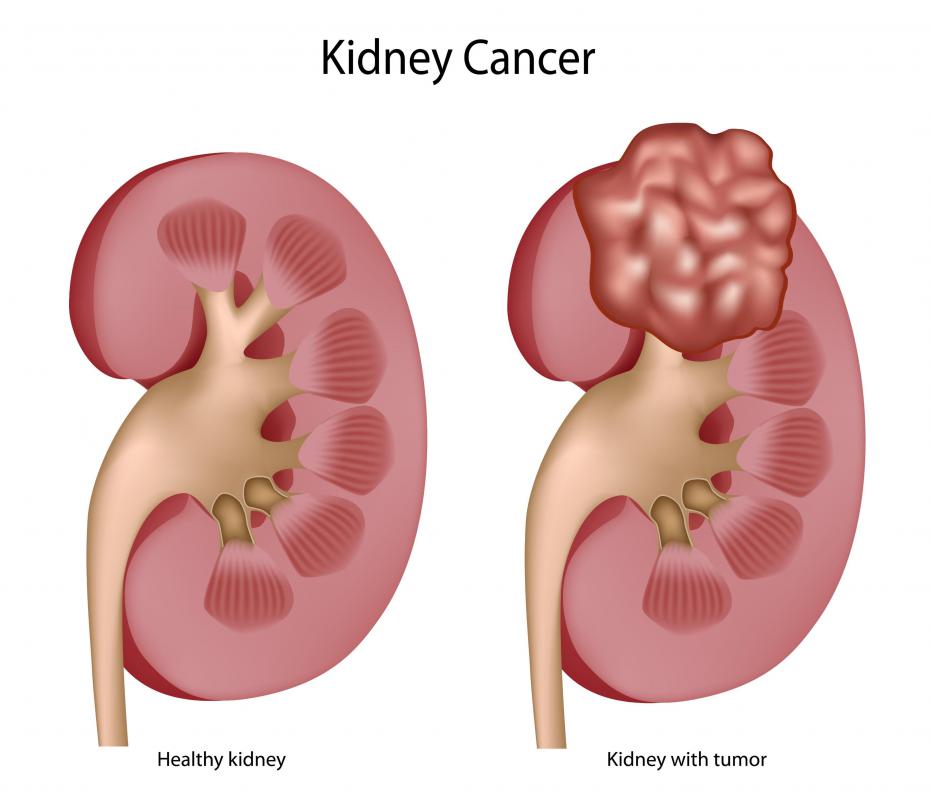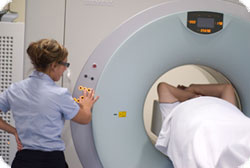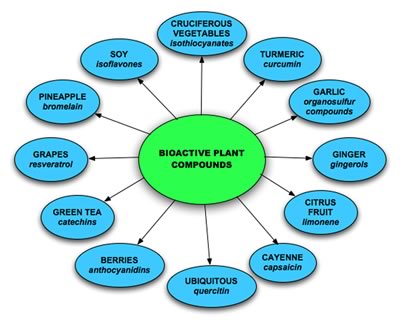Source(google.com.pk)
Daily Health Tips Biography
Experts agree the key to healthy eating is the time-tested advice of balance, variety and moderation. In short, that means eating a wide variety of foods without getting too many calories or too much of any one nutrient. These 10 tips can help you follow that advice while still enjoying the foods you eat.
See Reference Guide for: Vitamins Minerals Amino Acids Herbs Special Nutrients Anti-Oxidants
Dietary Fibers Nutritional Greens Digestive Nutrients also see Nutritional Glossary INDEX
Eat a variety of nutrient-rich foods. You need more than 40 different nutrients for good health, and no single food supplies them all. Your daily food selection should include bread and other whole-grain products; fruits; vegetables; dairy products; and meat, poultry, fish and other protein foods. How much you should eat depends on your calorie needs. Use the Food Guide Pyramid and the Nutrition Facts panel on food labels as handy references.
Enjoy plenty of whole grains, fruits and vegetables. Surveys show most Americans don't eat enough of these foods. Do you eat 6-11 servings from the bread, rice, cereal and pasta group, 3 of which should be whole grains? Do you eat 2-4 servings of fruit and 3-5 servings of vegetables? If you don't enjoy some of these at first, give them another chance. Look through cookbooks for tasty ways to prepare unfamiliar foods.
Maintain a healthy weight. The weight that's right for you depends on many factors including your sex, height, age and heredity. Excess body fat increases your chances for high blood pressure, heart disease, stroke, diabetes, some types of cancer and other illnesses. But being too thin can increase your risk for osteoporosis, menstrual irregularities and other health problems. If you're constantly losing and regaining weight, a registered dietitian can help you develop sensible eating habits for successful weight management. Regular exercise is also important to maintaining a healthy weight.
Eat moderate portions. If you keep portion sizes reasonable, it's easier to eat the foods you want and stay healthy. Did you know the recommended serving of cooked meat is 3 ounces, similar in size to a deck of playing cards? A medium piece of fruit is 1 serving and a cup of pasta equals 2 servings. A pint of ice cream contains 4 servings. Refer to the Food Guide Pyramid for information on recommended serving sizes.
Eat regular meals. Skipping meals can lead to out-of-control hunger, often resulting in overeating. When you're very hungry, it's also tempting to forget about good nutrition. Snacking between meals can help curb hunger, but don't eat so much that your snack becomes an entire meal.
Reduce, don't eliminate certain foods. Most people eat for pleasure as well as nutrition. If your favorite foods are high in fat, salt or sugar, the key is moderating how much of these foods you eat and how often you eat them.
Identify major sources of these ingredients in your diet and make changes, if necessary. Adults who eat high-fat meats or whole-milk dairy products at every meal are probably eating too much fat. Use the Nutrition Facts panel on the food label to help balance your choices.
Choosing skim or low-fat dairy products and lean cuts of meat such as flank steak and beef round can reduce fat intake significantly.
If you love fried chicken, however, you don't have to give it up. Just eat it less often. When dining out, share it with a friend, ask for a take-home bag or a smaller portion.
Balance your food choices over time. Not every food has to be "perfect." When eating a food high in fat, salt or sugar, select other foods that are low in these ingredients. If you miss out on any food group one day, make up for it the next. Your food choices over several days should fit together into a healthy pattern.
Know your diet pitfalls. To improve your eating habits, you first have to know what's wrong with them. Write down everything you eat for three days. Then check your list according to the rest of these tips. Do you add a lot of butter, creamy sauces or salad dressings? Rather than eliminating these foods, just cut back your portions. Are you getting enough fruits and vegetables? If not, you may be missing out on vital nutrients.
Make changes gradually. Just as there are no "superfoods" or easy answers to a healthy diet, don't expect to totally revamp your eating habits overnight. Changing too much, too fast can get in the way of success. Begin to remedy excesses or deficiencies with modest changes that can add up to positive, lifelong eating habits. For instance, if you don't like the taste of skim milk, try low-fat. Eventually you may find you like skim, too.
Remember, foods are not good or bad. Select foods based on your total eating patterns, not whether any individual food is "good" or "bad." Don't feel guilty if you love foods such as apple pie, potato chips, candy bars or ice cream. Eat them in moderation, and choose other foods to provide the balance and variety that are vital to good health.
See Reference Guide for: Vitamins Minerals Amino Acids Herbs Special Nutrients Anti-Oxidants
Dietary Fibers Nutritional Greens Digestive Nutrients also see Nutritional Glossary INDEX
Figuring Out Fat
With so much information available about the effects of dietary fat on health, understanding the role fat plays in a well-balanced diet can be pretty confusing. To cut through the confusion, it's important to remember that fat is an essential nutrient that everyone needs to stay healthy.
Fat is a valuable energy source and carries fat-soluble vitamins needed for proper growth and development. It also contributes important taste and textural qualities that are part of enjoying food.
Too much fat, however, can increase the risk of heart disease, obesity and other health problems. When moderating fat intake, it's important to consider these points:
Health authorities recommend Americans consume 30 percent or less of their total daily calories from fat, with 10 percent or less of those calories from saturated fat. Remember, the 30 percent refers to your total fat intake over time, not single foods or meals. Use the following chart to guide your fat intake.
If you eat this Total fat Total saturated
number of calories per day fat per day
per day: (grams) (grams)
1,600 53 or less 18 or less
2,000 65 or less 20 or less
2,200 73 or less 24 or less
2,500 80 or less 25 or less
Use the Nutrition Facts panel on the food label to help determine how much fat is in foods. Remember, it's the total fat intake over time that's important. A food high in fat can be part of a healthy diet as long as it's balanced with other lower-fat food choices.
All fats are a combination of saturated, polyunsaturated and monounsaturated fatty acids. Each of these types of fats have different effects on the body, but all contain nine calories per gram.
Blood cholesterol levels are influenced by family history, weight, age, smoking, physical activity and eating habits. Studies have shown that diets which are too high in certain saturated fatty acids and dietary cholesterol can raise blood cholesterol.
See Reference Guide for: Vitamins Minerals Amino Acids Herbs Special Nutrients Anti-Oxidants
Dietary Fibers Nutritional Greens Digestive Nutrients also see Nutritional Glossary INDEX
The Food Guide Pyramid
The Food Guide Pyramid is a practical tool to help you make food choices that are consistent with the Dietary Guidelines for Americans. Using the Pyramid enables you to eat a variety of foods daily so that you can get the nutrients you need.
To make the most of the Pyramid, you need to know what counts as a serving.
Food Group--Serving Size
Bread--1 slice bread, 1\2 bagel or English muffin, 1 ounce ready-to-eat cereal, 1\2 cup cooked cereal, rice or pasta, or 5-6 small crackers
Vegetable--1 cup raw, leafy vegetables, 1\2 cup cooked or chopped raw vegetables or 3\4 cup vegetable juice
Fruit--1 medium piece of fruit, 1\2 cup mixed fruit or 3\4 cup fruit juice
Milk--1 cup milk or yogurt, 11\2 ounces natural cheese or 2 ounces process cheese
Meat--2 - 3 ounces cooked lean meat, poultry or fish (about the size of a deck of cards)
Other foods which count as 1 ounce meat: 1\2 cup cooked dry beans, 1 egg, 2 tablespoons peanut butter or 1\3 cup nuts
See Reference Guide for: Vitamins Minerals Amino Acids Herbs Special Nutrients Anti-Oxidants
Dietary Fibers Nutritional Greens Digestive Nutrients also see Nutritional Glossary INDEX
If You Want To Know More
A nutrition expert can help you develop a personal action plan for improving your eating habits while keeping the fun in food. A registered dietitian (R.D.) is an authority on food, nutrition and health, and can provide valuable information and advice.
To locate a registered dietitian in your area, ask your physician, or call the consumer nutrition hot line (800/366-1655) of the National Center for Nutrition and Dietetics, the public education center of The American Dietetic Association. Registered dietitians are available to answer your food and nutrition questions Monday through Friday from 9 a.m. to 4 p.m. central time. In addition, you can listen to nutrition messages in English and Spanish, Monday through Friday from 8 a.m. to 8 p.m. central time.
International Food Information Council Foundation
1100 Connecticut Avenue, N.W.
Suite 430
Washington, DC 20036
Reprinted from the International Food Information Council Foundation, 1994
Cosponsored by:
The American Dietetic Association
Also see:
Phytochemicals: Nutrients Of The Future
Antioxidants: An Antidote to Aging?
Better Eating for Better Aging
Nutrition Is Key To Successful Aging: Kidd
Latest Concepts in Nutrition
Life Long Weight Management for Health and Happiness
New Perspectives on Diet and Cancer
Upbeat on Fiber for Longer Life and Better Health
A Refresher On Water for Long Life and Health
Daily Recommendations: Vitamins, Minerals & Trace Elements
Suggested Readings and Guide References
See Reference Guide for: Vitamins Minerals Amino Acids Herbs Special Nutrients Anti-Oxidants
Dietary Fibers Nutritional Greens Digestive Nutrients also see Nutritional Glossary INDEX









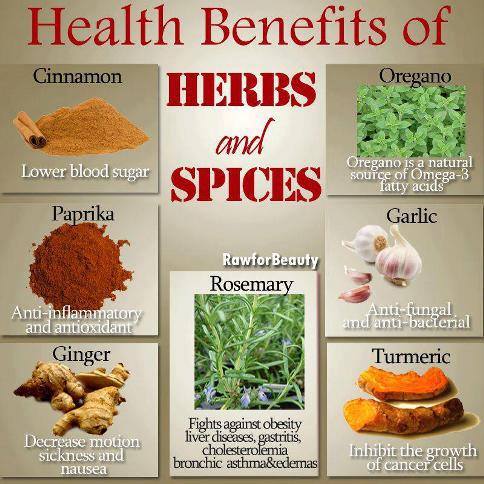
Daily Health Tips Biography
Experts agree the key to healthy eating is the time-tested advice of balance, variety and moderation. In short, that means eating a wide variety of foods without getting too many calories or too much of any one nutrient. These 10 tips can help you follow that advice while still enjoying the foods you eat.
See Reference Guide for: Vitamins Minerals Amino Acids Herbs Special Nutrients Anti-Oxidants
Dietary Fibers Nutritional Greens Digestive Nutrients also see Nutritional Glossary INDEX
Eat a variety of nutrient-rich foods. You need more than 40 different nutrients for good health, and no single food supplies them all. Your daily food selection should include bread and other whole-grain products; fruits; vegetables; dairy products; and meat, poultry, fish and other protein foods. How much you should eat depends on your calorie needs. Use the Food Guide Pyramid and the Nutrition Facts panel on food labels as handy references.
Enjoy plenty of whole grains, fruits and vegetables. Surveys show most Americans don't eat enough of these foods. Do you eat 6-11 servings from the bread, rice, cereal and pasta group, 3 of which should be whole grains? Do you eat 2-4 servings of fruit and 3-5 servings of vegetables? If you don't enjoy some of these at first, give them another chance. Look through cookbooks for tasty ways to prepare unfamiliar foods.
Maintain a healthy weight. The weight that's right for you depends on many factors including your sex, height, age and heredity. Excess body fat increases your chances for high blood pressure, heart disease, stroke, diabetes, some types of cancer and other illnesses. But being too thin can increase your risk for osteoporosis, menstrual irregularities and other health problems. If you're constantly losing and regaining weight, a registered dietitian can help you develop sensible eating habits for successful weight management. Regular exercise is also important to maintaining a healthy weight.
Eat moderate portions. If you keep portion sizes reasonable, it's easier to eat the foods you want and stay healthy. Did you know the recommended serving of cooked meat is 3 ounces, similar in size to a deck of playing cards? A medium piece of fruit is 1 serving and a cup of pasta equals 2 servings. A pint of ice cream contains 4 servings. Refer to the Food Guide Pyramid for information on recommended serving sizes.
Eat regular meals. Skipping meals can lead to out-of-control hunger, often resulting in overeating. When you're very hungry, it's also tempting to forget about good nutrition. Snacking between meals can help curb hunger, but don't eat so much that your snack becomes an entire meal.
Reduce, don't eliminate certain foods. Most people eat for pleasure as well as nutrition. If your favorite foods are high in fat, salt or sugar, the key is moderating how much of these foods you eat and how often you eat them.
Identify major sources of these ingredients in your diet and make changes, if necessary. Adults who eat high-fat meats or whole-milk dairy products at every meal are probably eating too much fat. Use the Nutrition Facts panel on the food label to help balance your choices.
Choosing skim or low-fat dairy products and lean cuts of meat such as flank steak and beef round can reduce fat intake significantly.
If you love fried chicken, however, you don't have to give it up. Just eat it less often. When dining out, share it with a friend, ask for a take-home bag or a smaller portion.
Balance your food choices over time. Not every food has to be "perfect." When eating a food high in fat, salt or sugar, select other foods that are low in these ingredients. If you miss out on any food group one day, make up for it the next. Your food choices over several days should fit together into a healthy pattern.
Know your diet pitfalls. To improve your eating habits, you first have to know what's wrong with them. Write down everything you eat for three days. Then check your list according to the rest of these tips. Do you add a lot of butter, creamy sauces or salad dressings? Rather than eliminating these foods, just cut back your portions. Are you getting enough fruits and vegetables? If not, you may be missing out on vital nutrients.
Make changes gradually. Just as there are no "superfoods" or easy answers to a healthy diet, don't expect to totally revamp your eating habits overnight. Changing too much, too fast can get in the way of success. Begin to remedy excesses or deficiencies with modest changes that can add up to positive, lifelong eating habits. For instance, if you don't like the taste of skim milk, try low-fat. Eventually you may find you like skim, too.
Remember, foods are not good or bad. Select foods based on your total eating patterns, not whether any individual food is "good" or "bad." Don't feel guilty if you love foods such as apple pie, potato chips, candy bars or ice cream. Eat them in moderation, and choose other foods to provide the balance and variety that are vital to good health.
See Reference Guide for: Vitamins Minerals Amino Acids Herbs Special Nutrients Anti-Oxidants
Dietary Fibers Nutritional Greens Digestive Nutrients also see Nutritional Glossary INDEX
Figuring Out Fat
With so much information available about the effects of dietary fat on health, understanding the role fat plays in a well-balanced diet can be pretty confusing. To cut through the confusion, it's important to remember that fat is an essential nutrient that everyone needs to stay healthy.
Fat is a valuable energy source and carries fat-soluble vitamins needed for proper growth and development. It also contributes important taste and textural qualities that are part of enjoying food.
Too much fat, however, can increase the risk of heart disease, obesity and other health problems. When moderating fat intake, it's important to consider these points:
Health authorities recommend Americans consume 30 percent or less of their total daily calories from fat, with 10 percent or less of those calories from saturated fat. Remember, the 30 percent refers to your total fat intake over time, not single foods or meals. Use the following chart to guide your fat intake.
If you eat this Total fat Total saturated
number of calories per day fat per day
per day: (grams) (grams)
1,600 53 or less 18 or less
2,000 65 or less 20 or less
2,200 73 or less 24 or less
2,500 80 or less 25 or less
Use the Nutrition Facts panel on the food label to help determine how much fat is in foods. Remember, it's the total fat intake over time that's important. A food high in fat can be part of a healthy diet as long as it's balanced with other lower-fat food choices.
All fats are a combination of saturated, polyunsaturated and monounsaturated fatty acids. Each of these types of fats have different effects on the body, but all contain nine calories per gram.
Blood cholesterol levels are influenced by family history, weight, age, smoking, physical activity and eating habits. Studies have shown that diets which are too high in certain saturated fatty acids and dietary cholesterol can raise blood cholesterol.
See Reference Guide for: Vitamins Minerals Amino Acids Herbs Special Nutrients Anti-Oxidants
Dietary Fibers Nutritional Greens Digestive Nutrients also see Nutritional Glossary INDEX
The Food Guide Pyramid
The Food Guide Pyramid is a practical tool to help you make food choices that are consistent with the Dietary Guidelines for Americans. Using the Pyramid enables you to eat a variety of foods daily so that you can get the nutrients you need.
To make the most of the Pyramid, you need to know what counts as a serving.
Food Group--Serving Size
Bread--1 slice bread, 1\2 bagel or English muffin, 1 ounce ready-to-eat cereal, 1\2 cup cooked cereal, rice or pasta, or 5-6 small crackers
Vegetable--1 cup raw, leafy vegetables, 1\2 cup cooked or chopped raw vegetables or 3\4 cup vegetable juice
Fruit--1 medium piece of fruit, 1\2 cup mixed fruit or 3\4 cup fruit juice
Milk--1 cup milk or yogurt, 11\2 ounces natural cheese or 2 ounces process cheese
Meat--2 - 3 ounces cooked lean meat, poultry or fish (about the size of a deck of cards)
Other foods which count as 1 ounce meat: 1\2 cup cooked dry beans, 1 egg, 2 tablespoons peanut butter or 1\3 cup nuts
See Reference Guide for: Vitamins Minerals Amino Acids Herbs Special Nutrients Anti-Oxidants
Dietary Fibers Nutritional Greens Digestive Nutrients also see Nutritional Glossary INDEX
If You Want To Know More
A nutrition expert can help you develop a personal action plan for improving your eating habits while keeping the fun in food. A registered dietitian (R.D.) is an authority on food, nutrition and health, and can provide valuable information and advice.
To locate a registered dietitian in your area, ask your physician, or call the consumer nutrition hot line (800/366-1655) of the National Center for Nutrition and Dietetics, the public education center of The American Dietetic Association. Registered dietitians are available to answer your food and nutrition questions Monday through Friday from 9 a.m. to 4 p.m. central time. In addition, you can listen to nutrition messages in English and Spanish, Monday through Friday from 8 a.m. to 8 p.m. central time.
International Food Information Council Foundation
1100 Connecticut Avenue, N.W.
Suite 430
Washington, DC 20036
Reprinted from the International Food Information Council Foundation, 1994
Cosponsored by:
The American Dietetic Association
Also see:
Phytochemicals: Nutrients Of The Future
Antioxidants: An Antidote to Aging?
Better Eating for Better Aging
Nutrition Is Key To Successful Aging: Kidd
Latest Concepts in Nutrition
Life Long Weight Management for Health and Happiness
New Perspectives on Diet and Cancer
Upbeat on Fiber for Longer Life and Better Health
A Refresher On Water for Long Life and Health
Daily Recommendations: Vitamins, Minerals & Trace Elements
Suggested Readings and Guide References
See Reference Guide for: Vitamins Minerals Amino Acids Herbs Special Nutrients Anti-Oxidants
Dietary Fibers Nutritional Greens Digestive Nutrients also see Nutritional Glossary INDEX
Daily Health Tips

Daily Health Tips

Daily Health Tips

Daily Health Tips

Daily Health Tips

Daily Health Tips

Daily Health Tips

Daily Health Tips

Daily Health Tips

Daily Health Tips

Daily Health Tips

